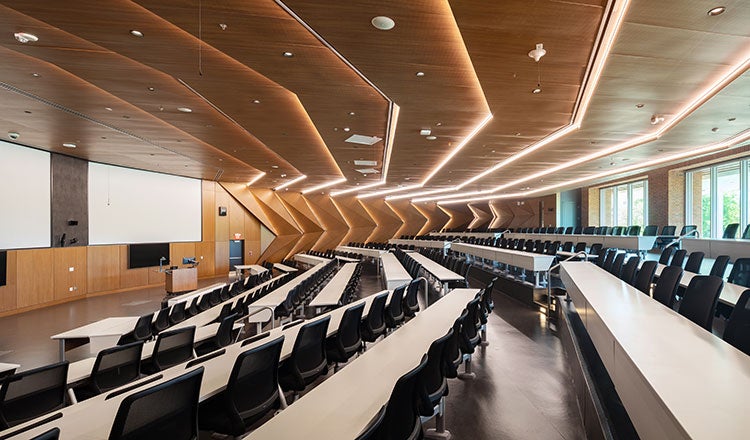
Designing the Classrooms of the Future: Making Campus the Place to Be
I recently had the opportunity to attend the Innovative Learning Spaces Summit in Prague, Czech Republic, where some of the world’s foremost education experts gathered to discuss the industry’s biggest challenges. One such question was this: As access to information becomes more ubiquitous and employers increasingly value “soft skills,” how do we create more engaging classrooms, buildings and campuses that attract students and enable them to thrive in school and beyond graduation?
The origins of academic lecture can be traced back as far as early Greek and Roman times where it became a widespread approach to knowledge sharing at a time when books were extremely rare and only a small percent of the population could read. Today, more than 60% of the world’s population has internet access. For more than 5.3 billion people, knowledge is more accessible than ever before. Because of this, modern classrooms take on an evolved role in society. Today’s best educators do more than read text aloud or flash PowerPoint slides — they inspire, lead and challenge students to expand their thinking.
In 2023, the most sought-after skills on LinkedIn for recent college graduates included problem-solving, written communication and teamwork — skills that aren’t necessarily honed while sitting in lectures or searching the internet. The tools students need to be successful have evolved, and learning spaces need to respond to these demands. This doesn’t suggest that we do away with classrooms or faculty, but that we consider how spaces and instructors can more effectively engage students and equip them with skills that are foundational to their success. This is part one of the "Designing the Classrooms of the Future" series.

Keeping Students on Campus
Many academic institutions strive to create a “sticky campus” that not only attracts students but keeps them there. The ideal model is a “learn-live-play” community, an education ecosystem that extends beyond the classroom and provides areas for students to collaborate, along with areas for respite and quiet contemplative study. Some of the most successful academic buildings and institutions utilize informal spaces to support formal teaching and learning. These spaces are not typically assigned or owned by departments or programs but are essential to retaining students outside class. At the College of Charleston’s Rita Hollings Science Center, an HDR project, flexible spaces are incorporated into hallways and stairwells and next to classrooms, labs and offices, creating spaces for students to meet, do heads-down work or have a one-on-one with a professor.
Students tend to frequent a wide range of spaces based on personal preference, educational needs, time of day, ambient noise, technology, access to power and internet, and convenience, to name a few. One presenter at the conference said when he asked a group of students where they felt most comfortable on campus, responses ranged from the student union to the library, gym, and outdoor spaces. They represent an array of space types, seating arrangements, and atmospheres that vary in scale and privacy. Unassigned areas such as hoteling spaces, meeting rooms, huddle rooms, telephone booths, and open work areas allow students autonomy in where and how they work. Students tend to frequent spaces on campus that allow them to choose how they study, have views to the outside, and offer food or are close to affordable food options.
This style of campus can also promote stronger connections between faculty and students. Typically, fewer than half of students in a class are comfortable meeting with a professor during office hours despite most professors welcoming student engagement. By incentivizing students to stay on campus and comingling administrative offices among the spaces where they spend time, designers can make it more comfortable and convenient for students to visit their professors. Many faculty also reported they prefer this arrangement because it allows them to reach more students concurrently.




